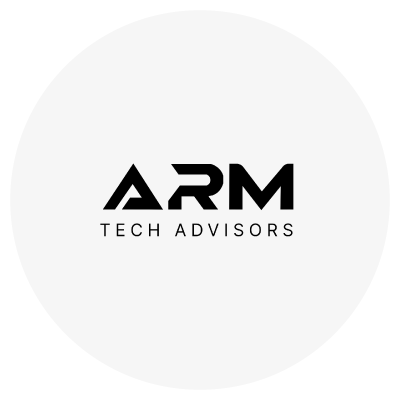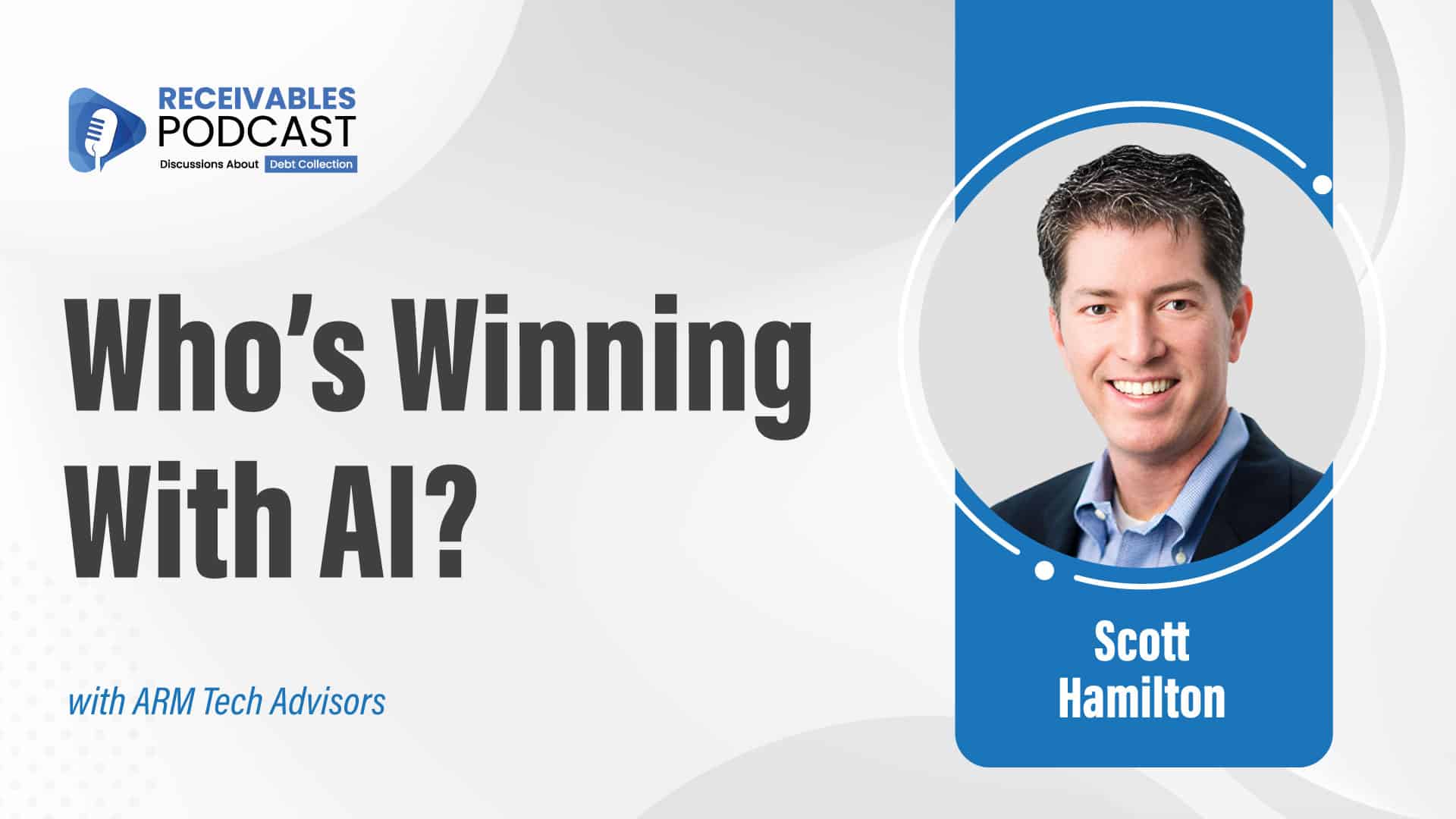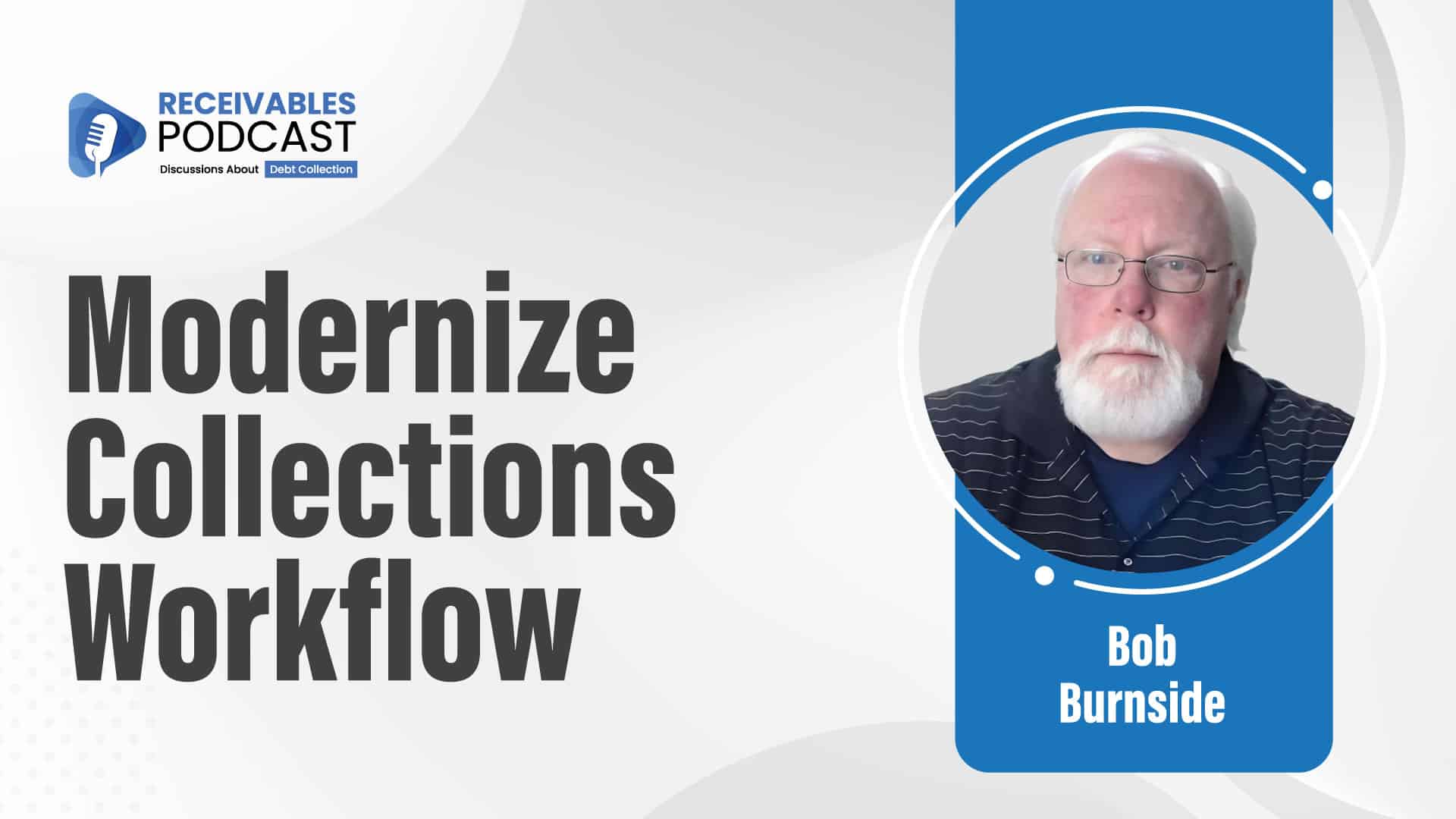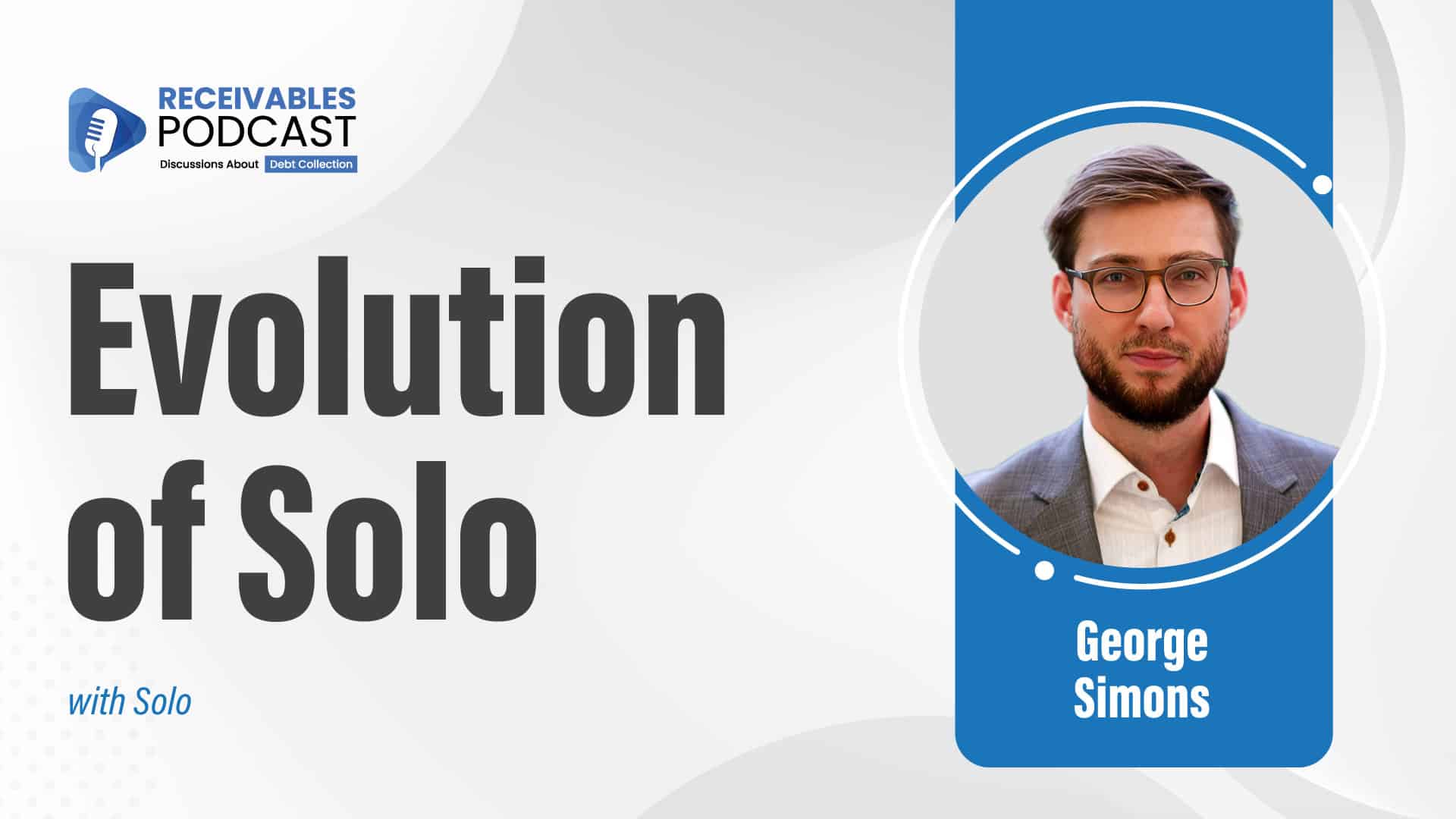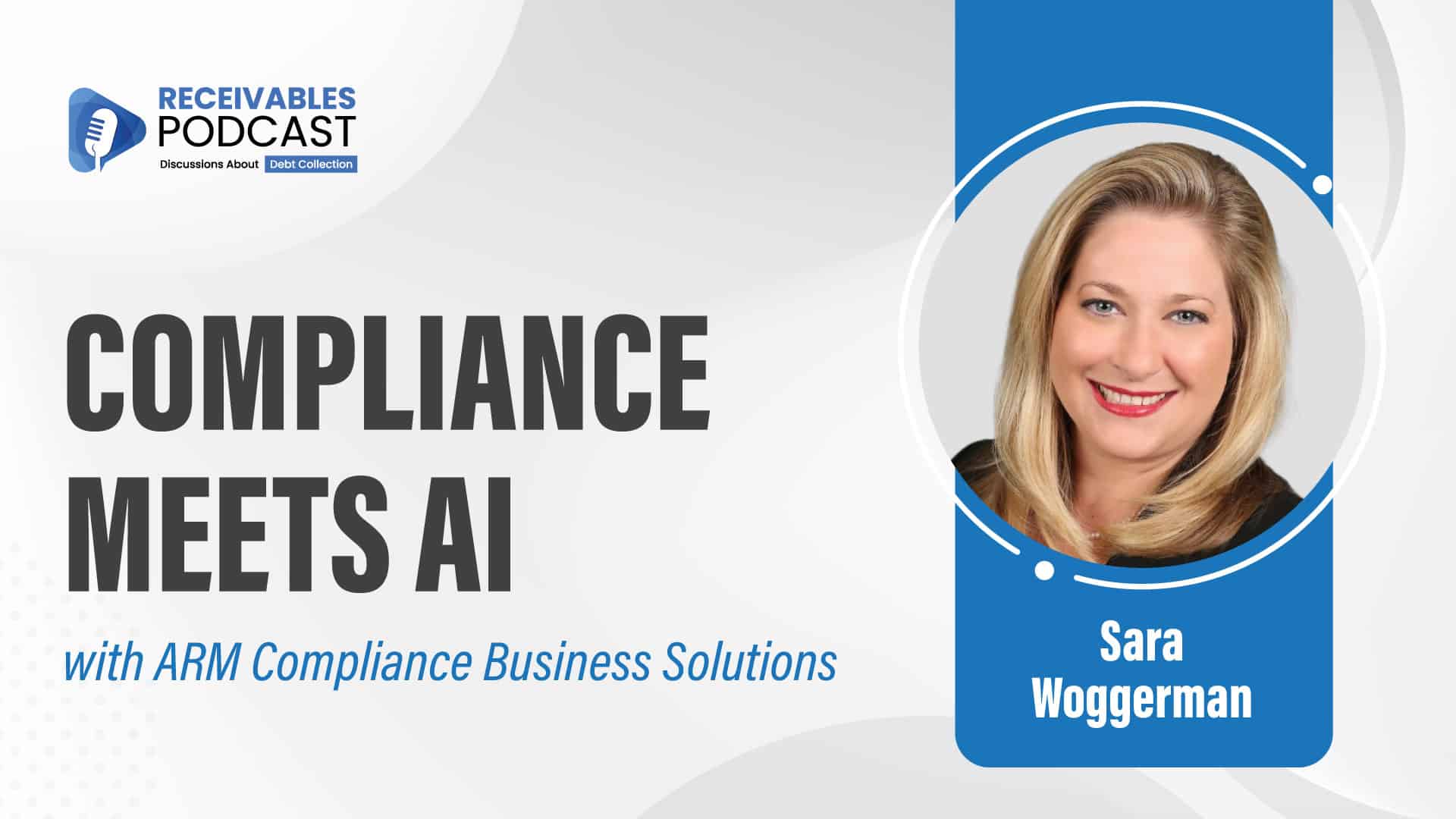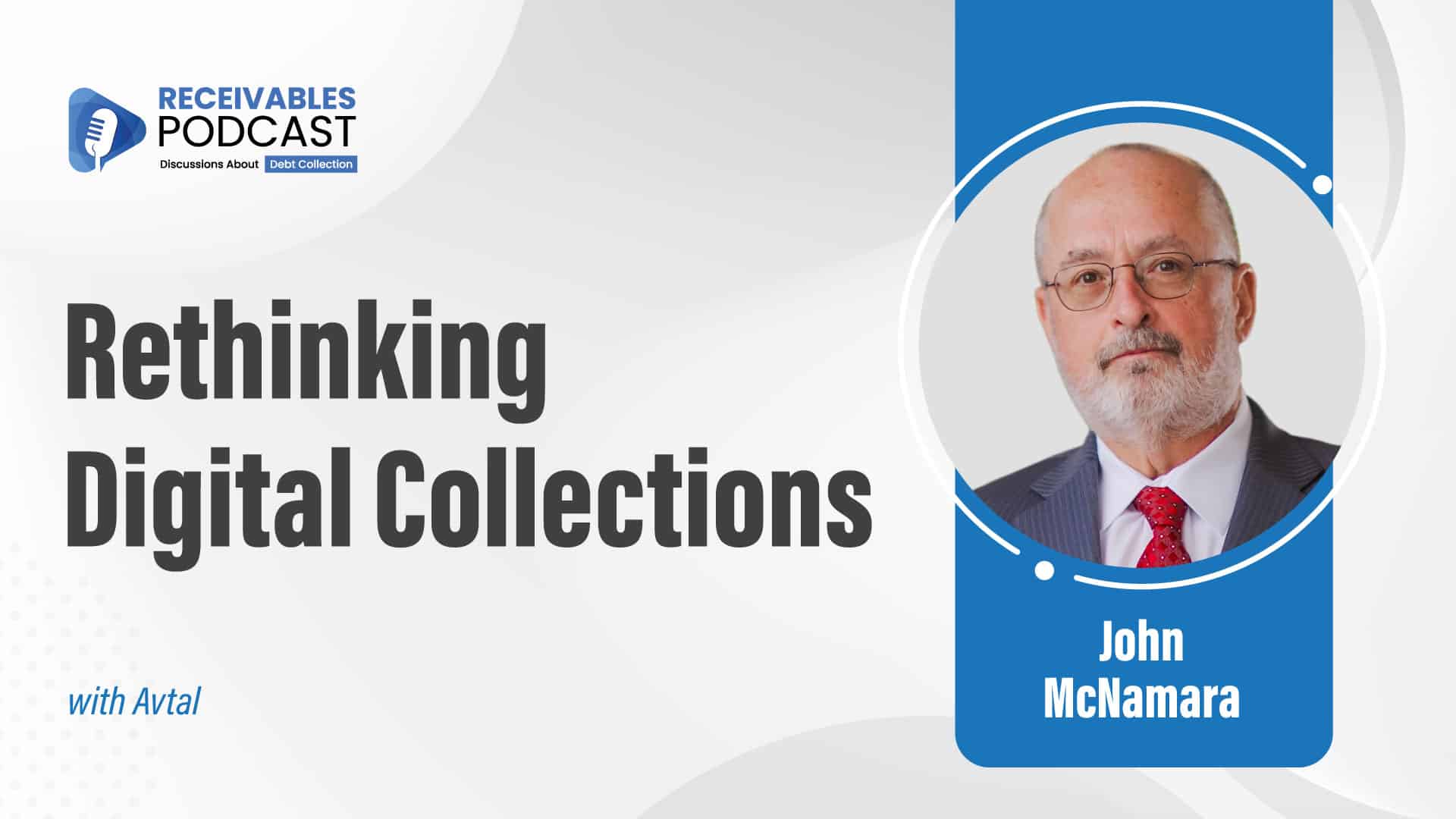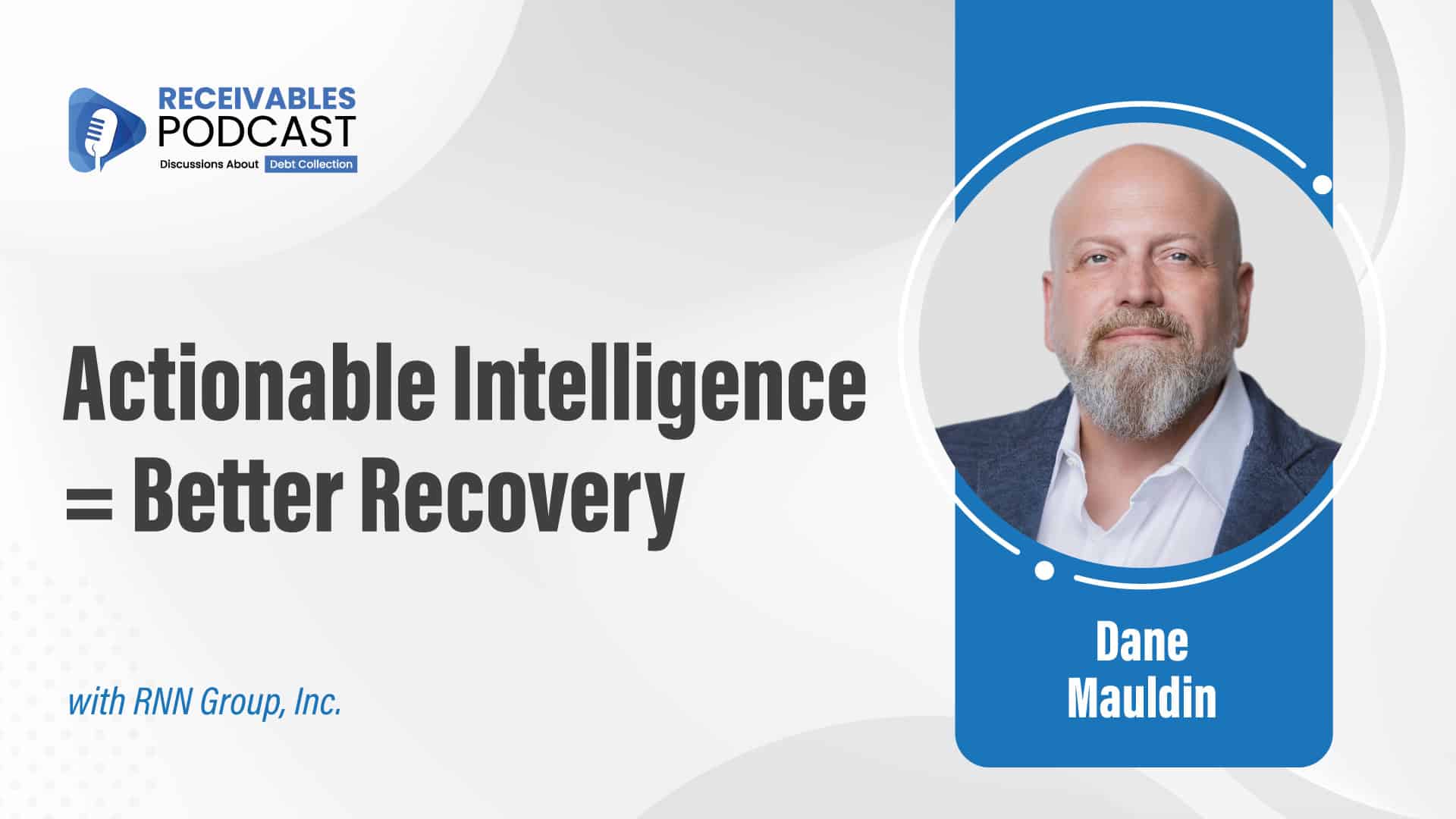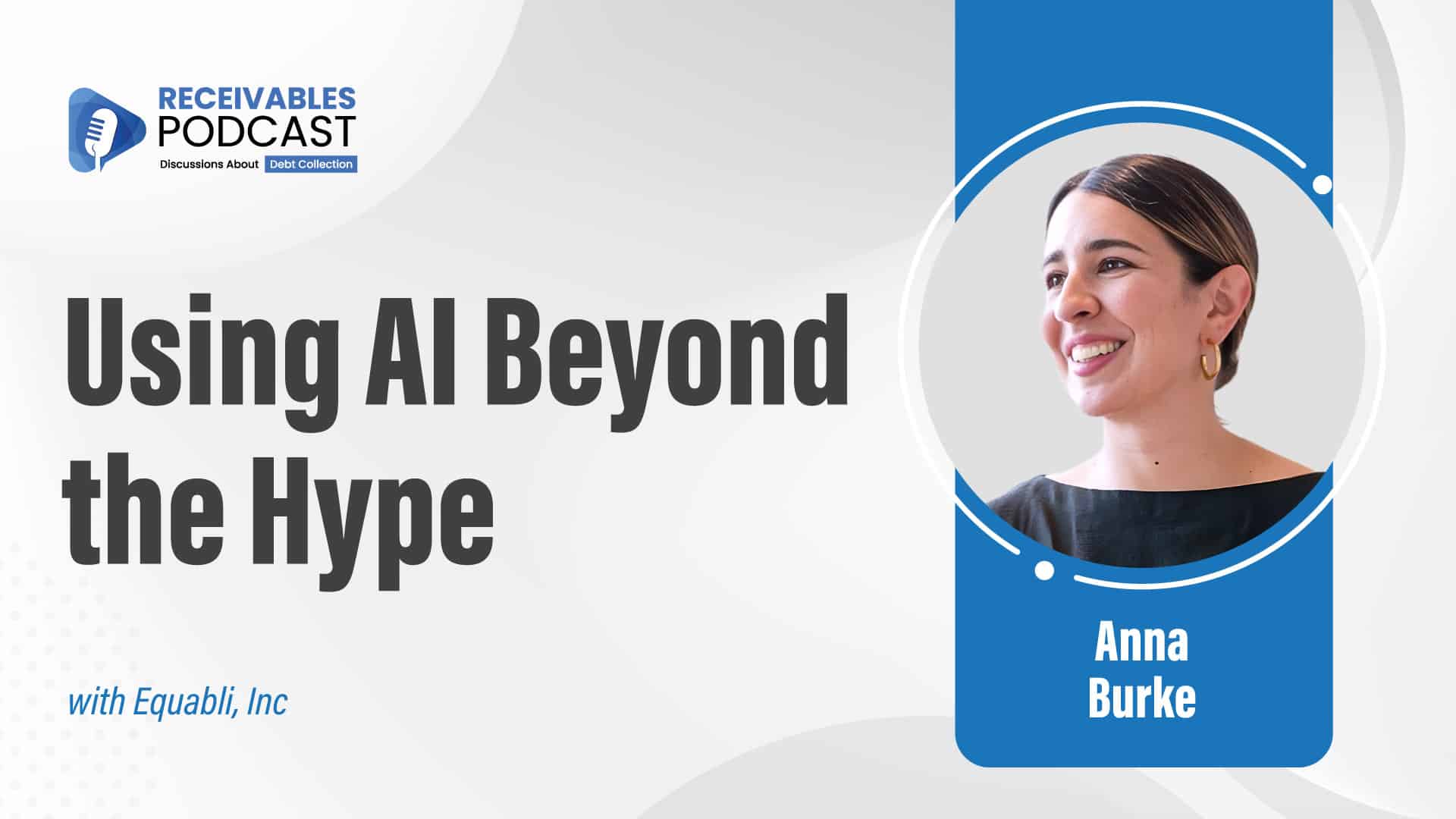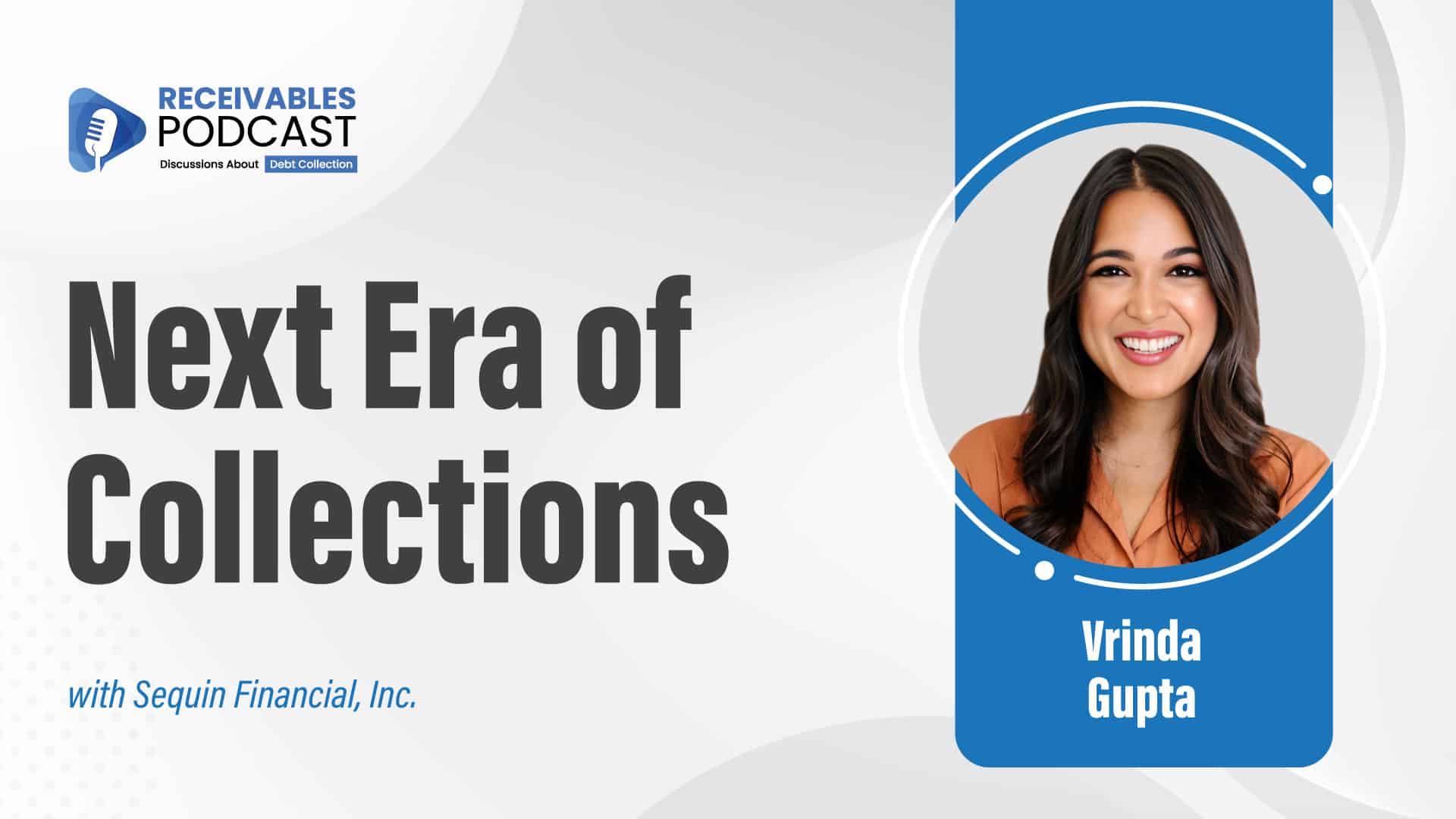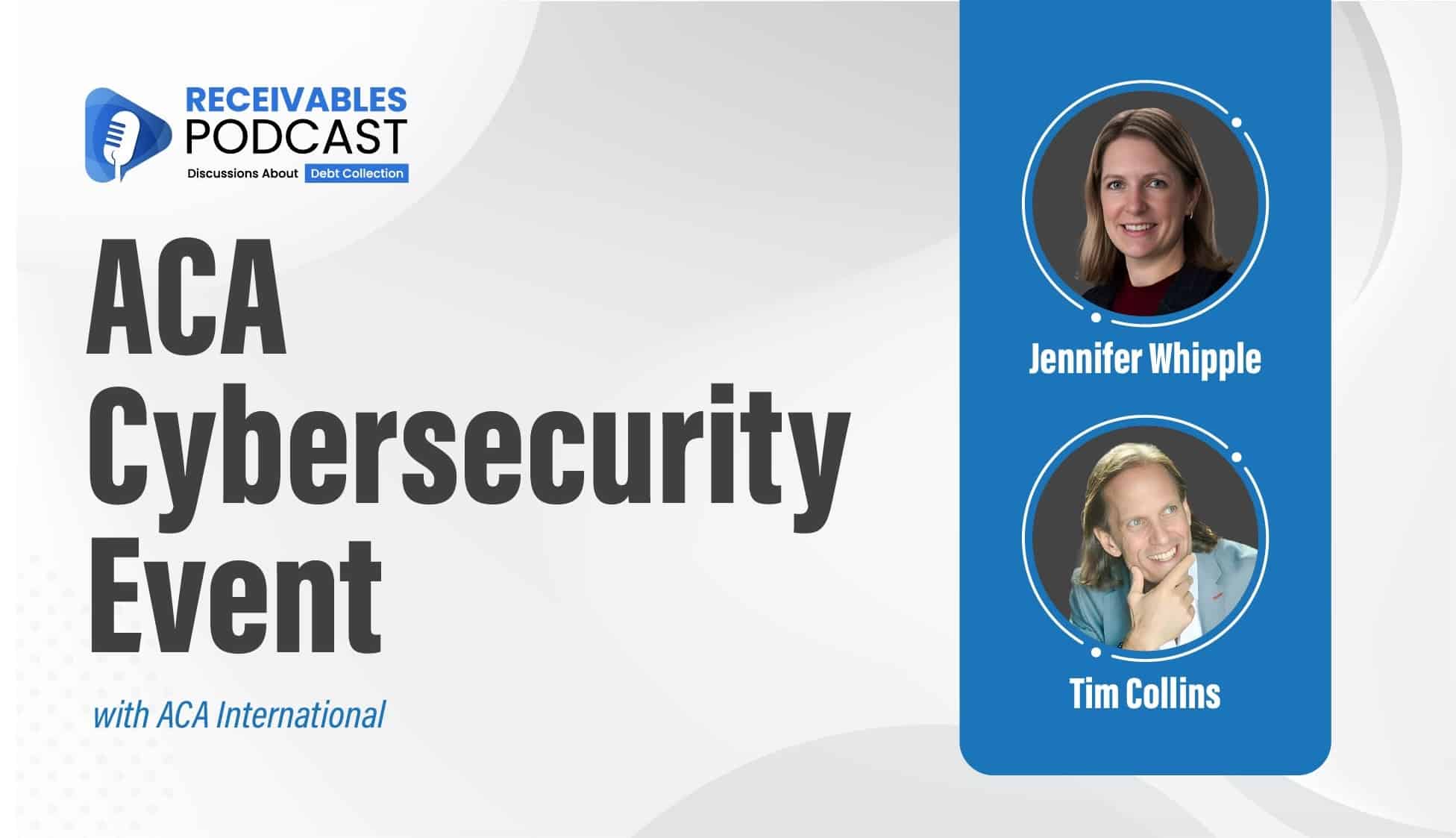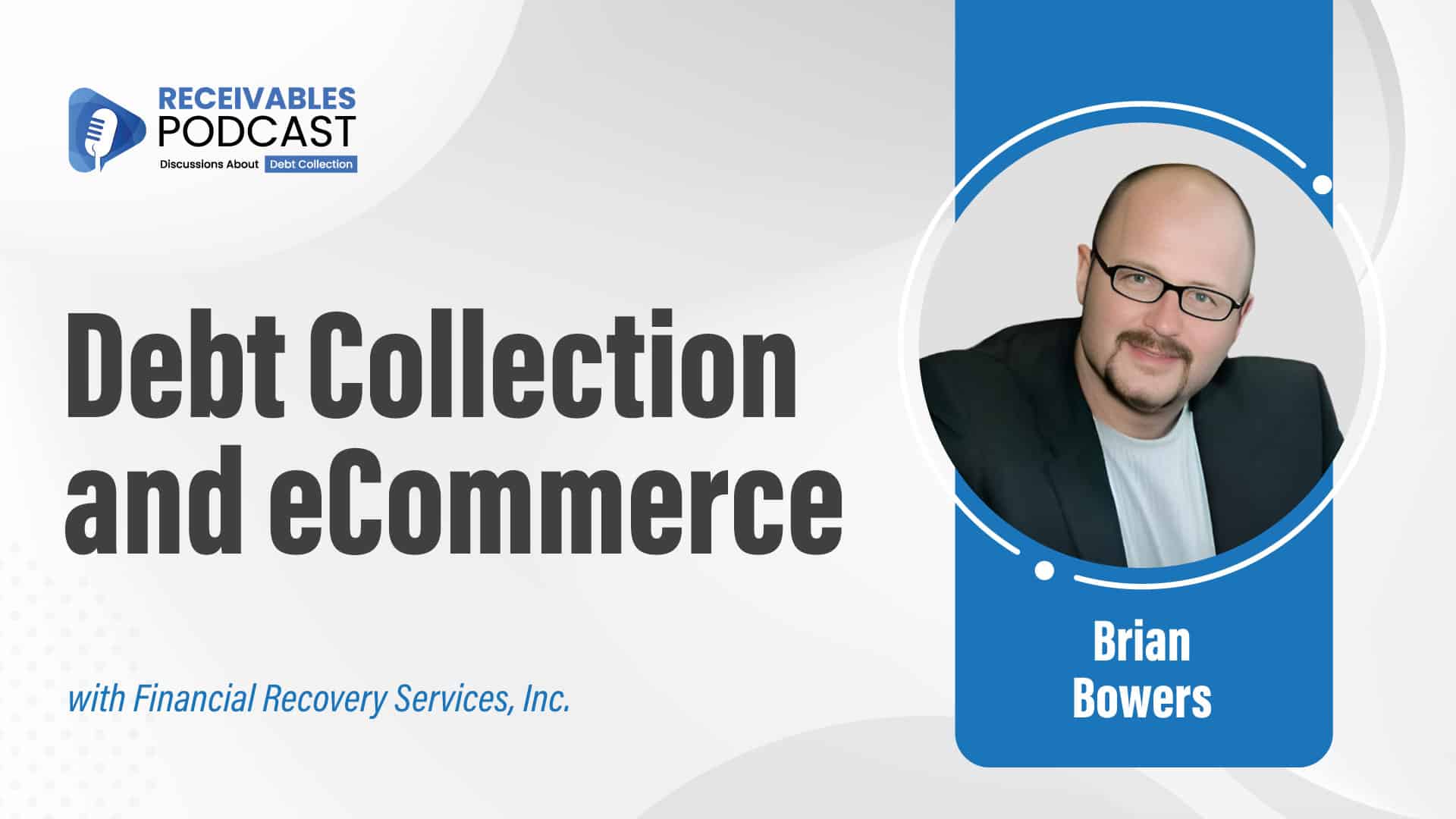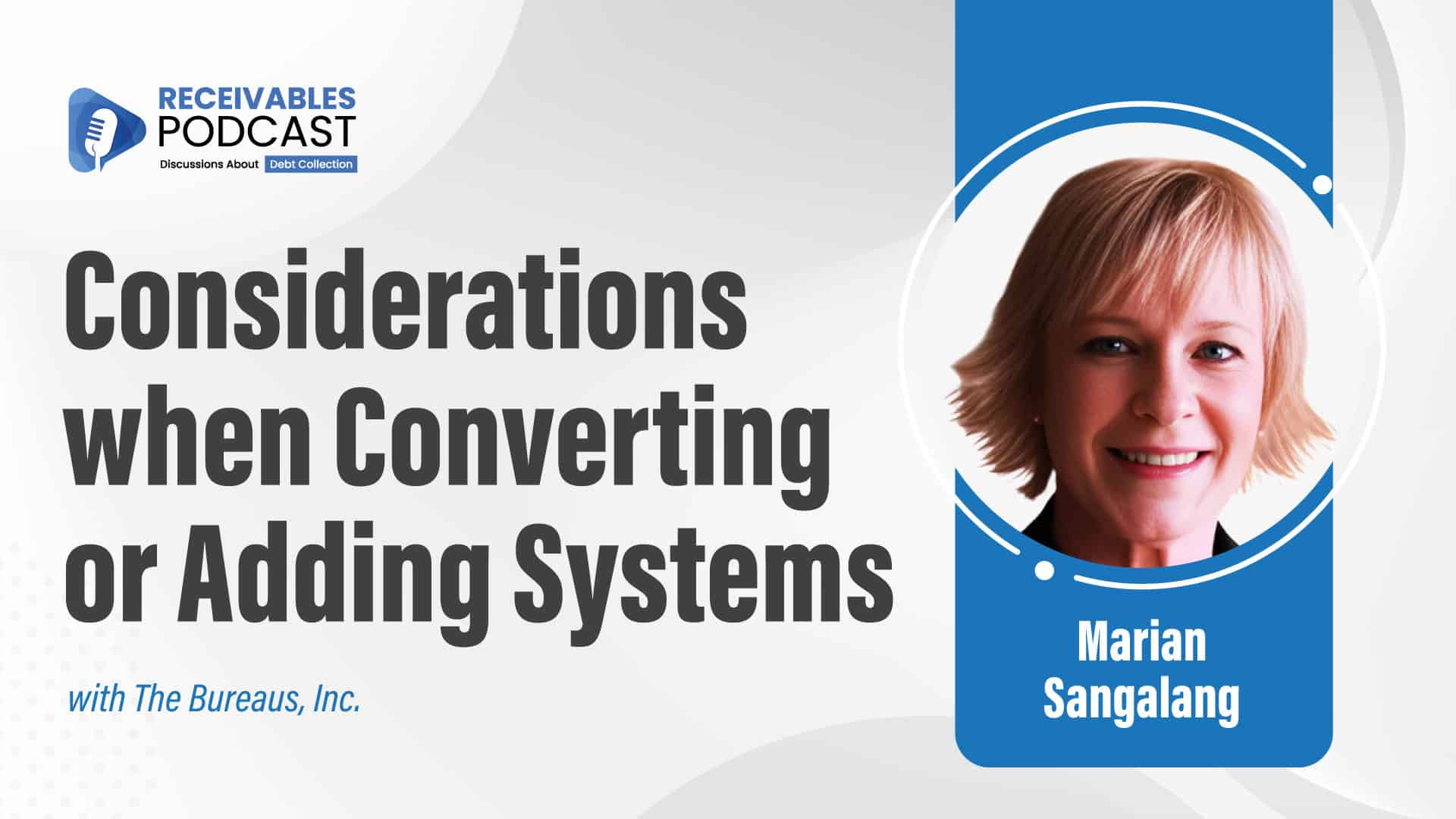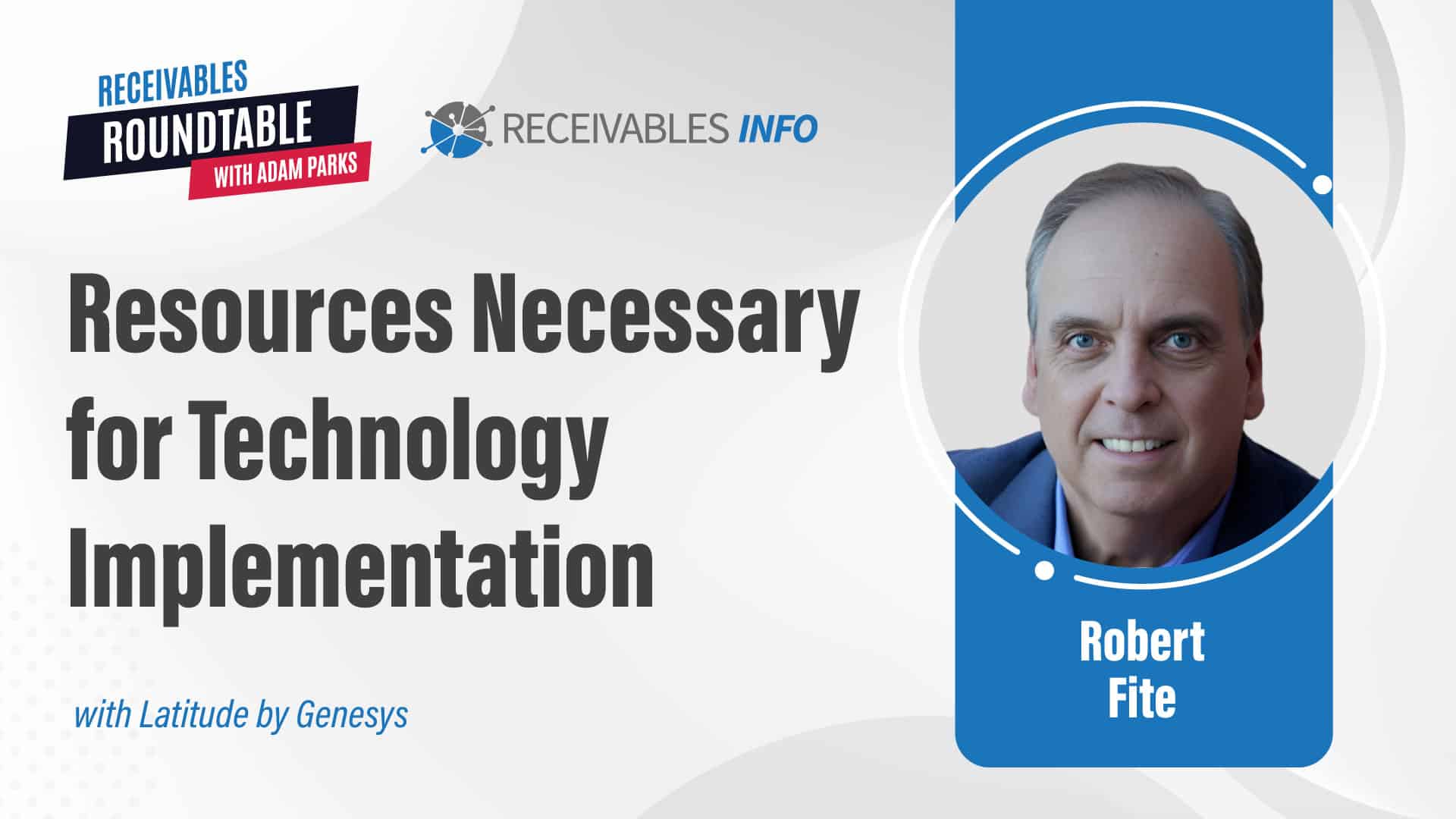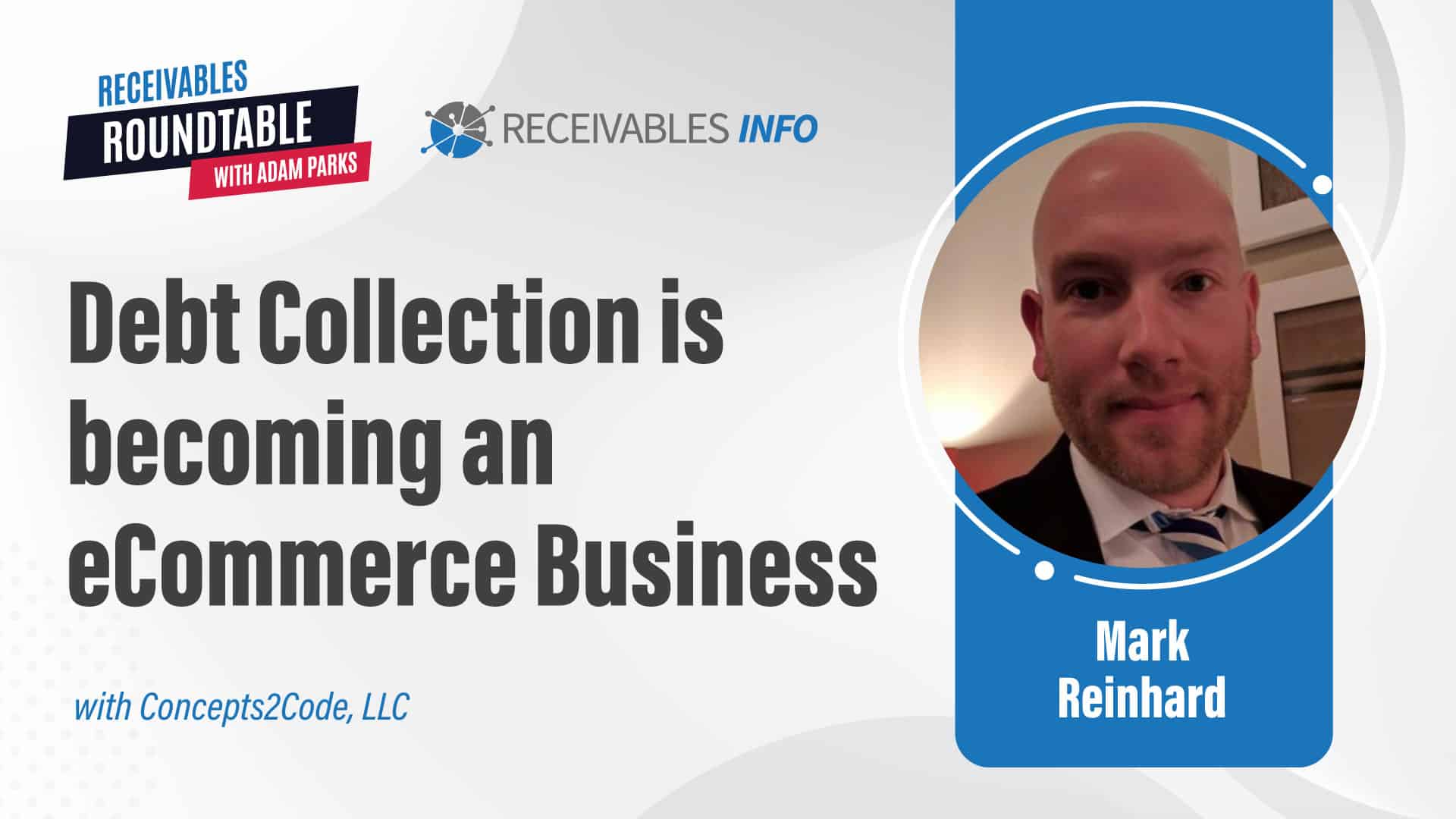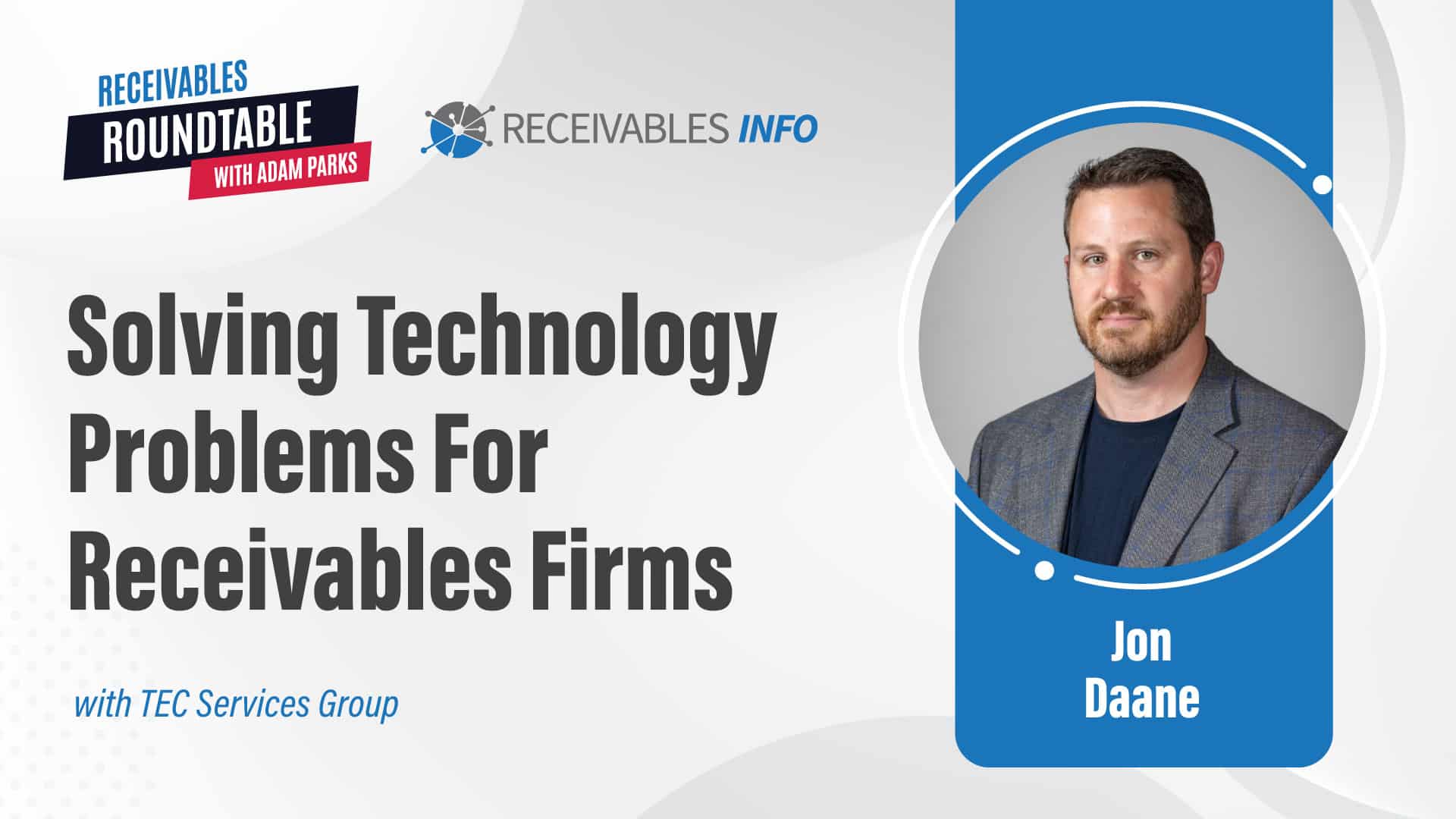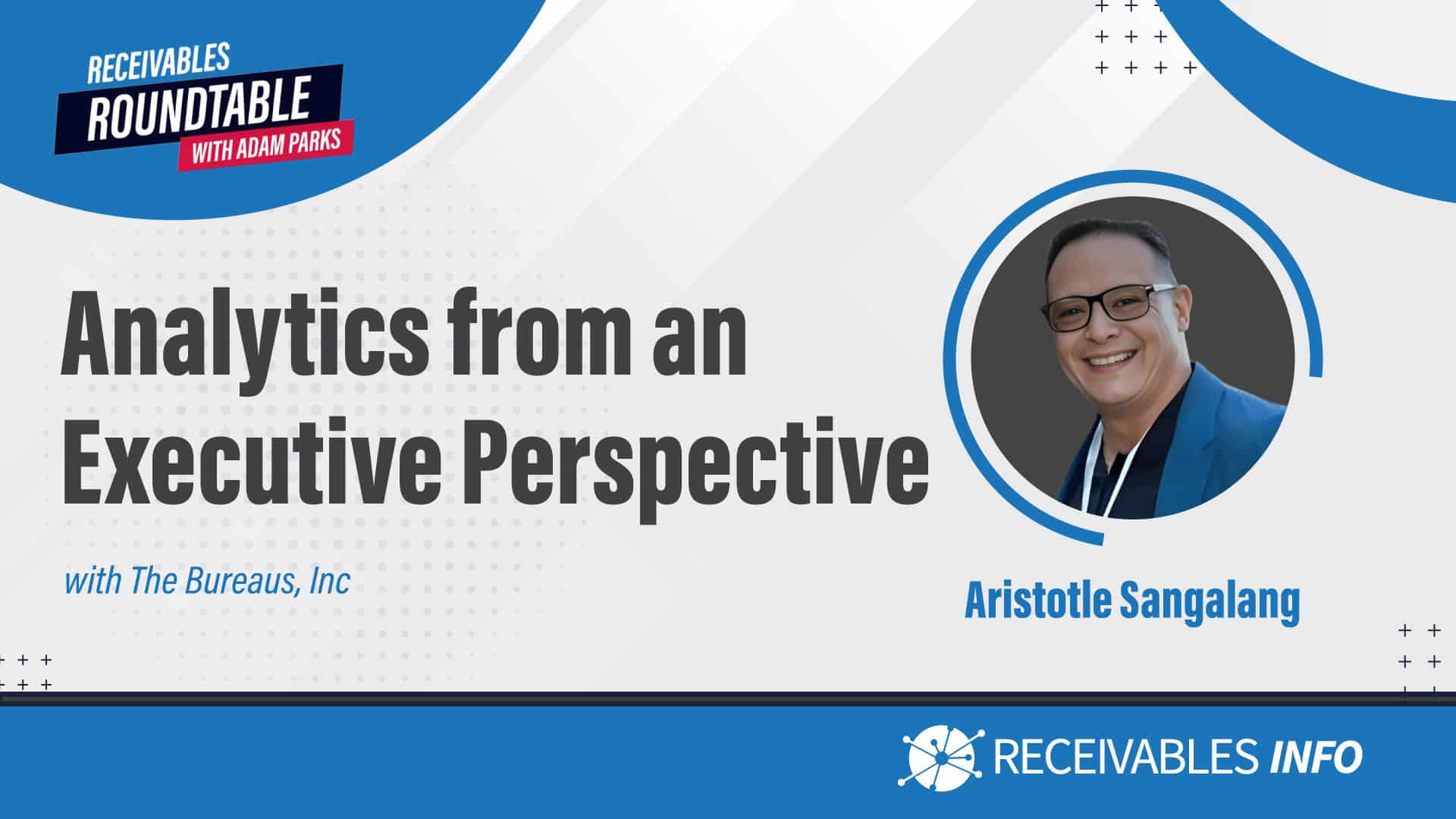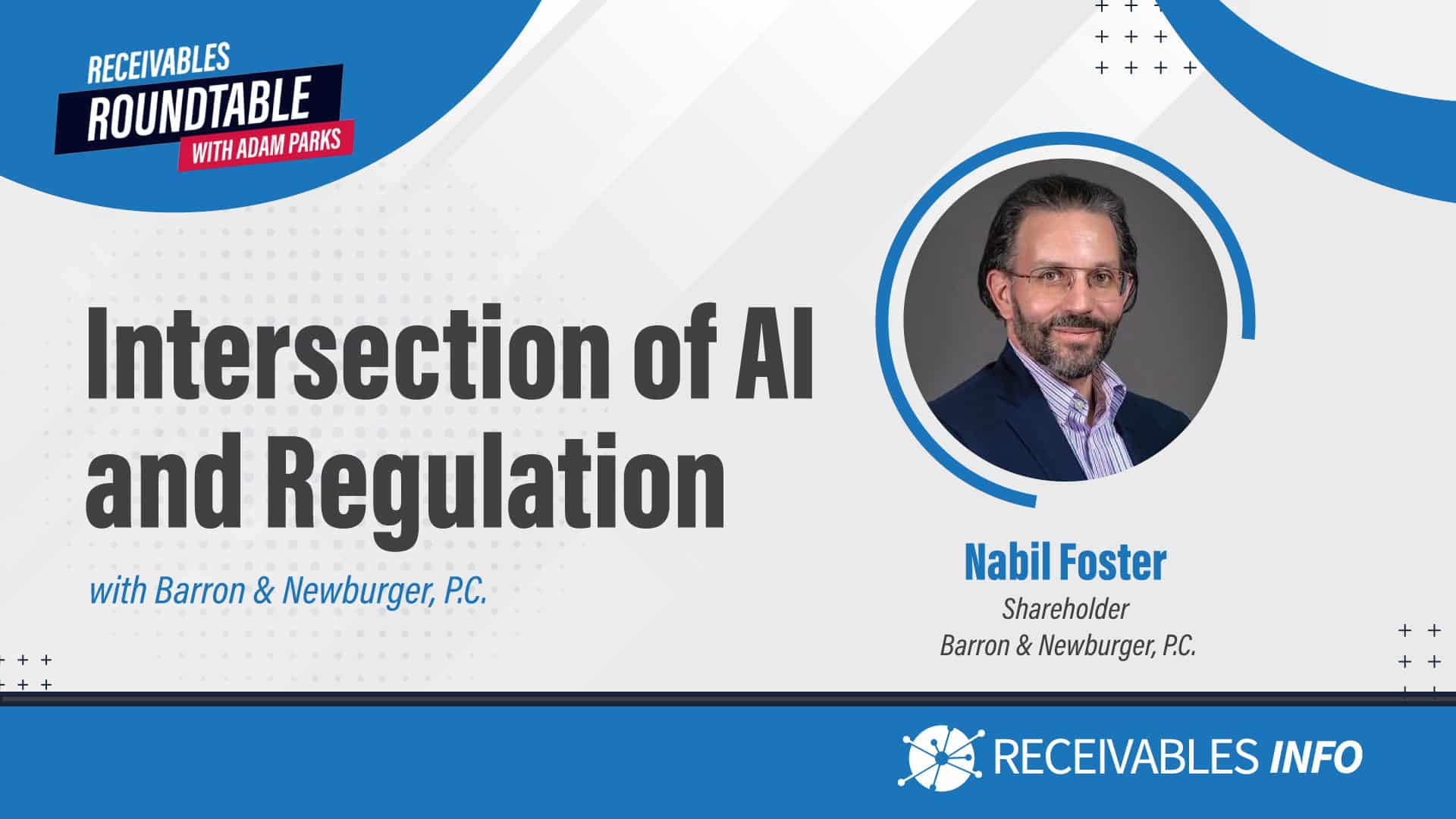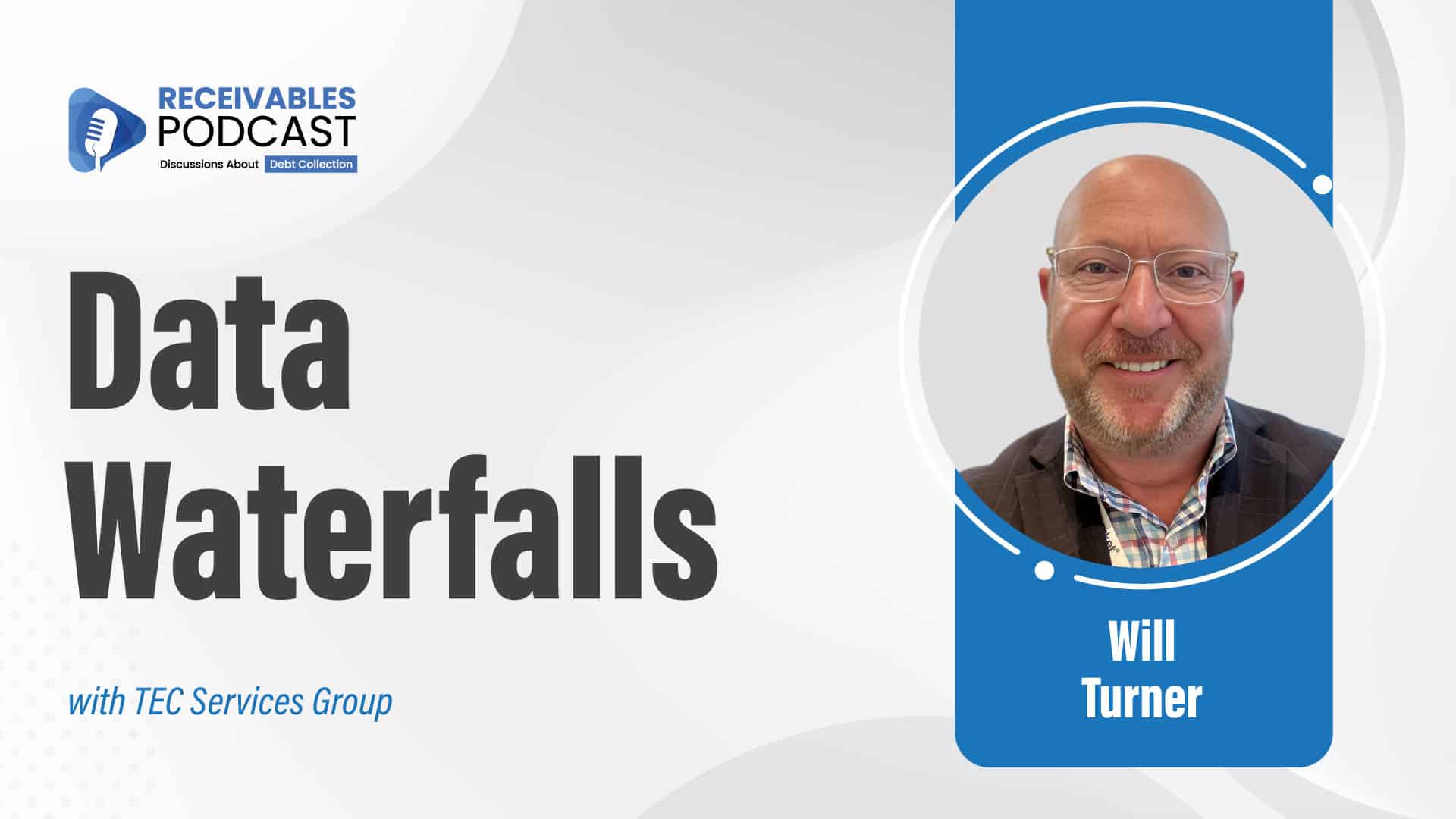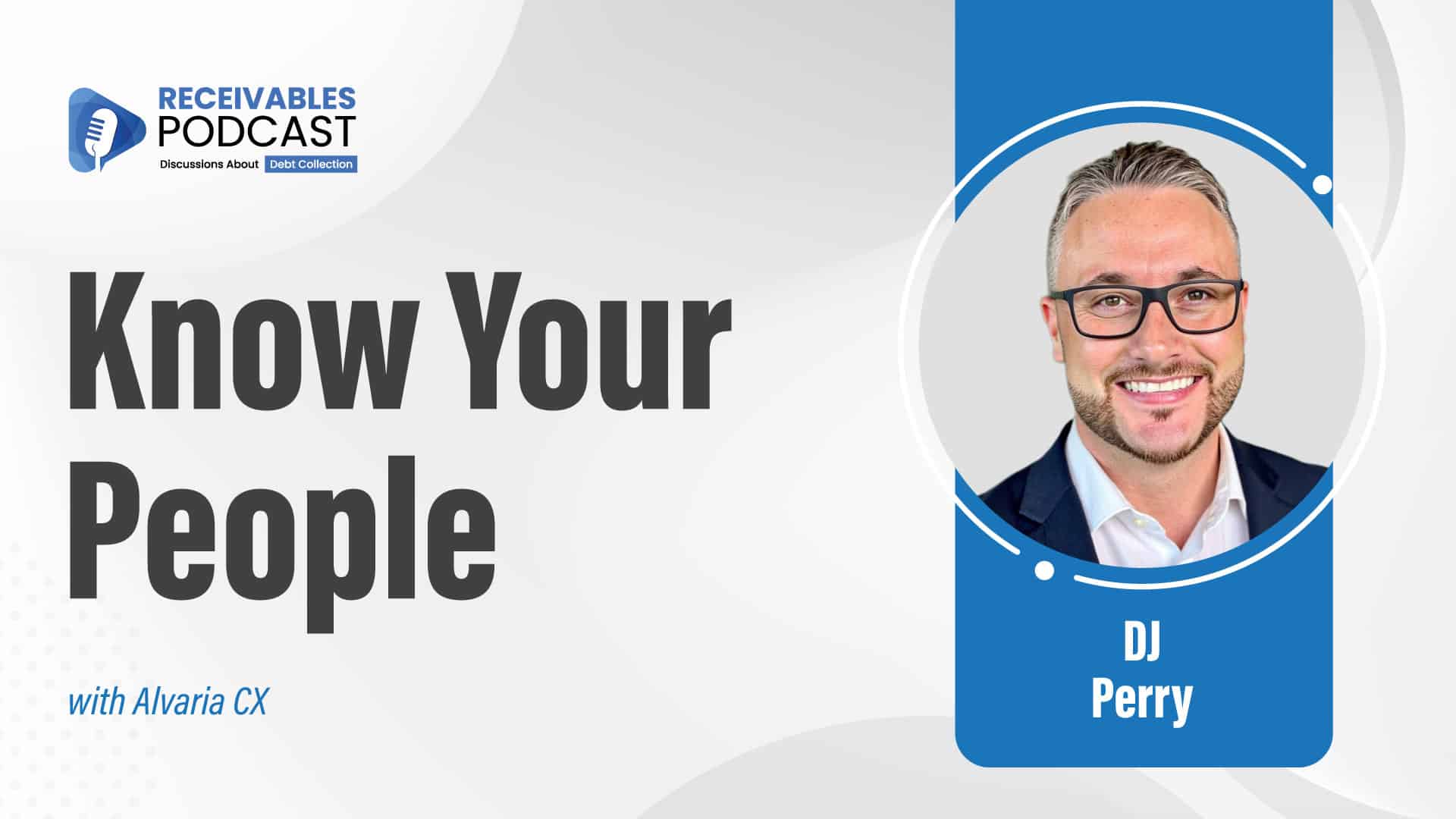Adam Parks (00:08)
Hello everybody, Adam Parks here with another episode of Receivables Podcast. Today I'm here with Scott Hamilton, who is absolutely working on some really interesting things. How you doing today, Scott?
Scott Hamilton (00:20)
I'm well, as everybody's probably experienced, my Wi-Fi is out and I'm at the local library. fantastic place to visit other than Starbucks for a webinar. So support your local library.
Adam Parks (00:32)
I like
that. I think you're right on point, Scott. Nothing quite like the local library. But for anyone who has not been as lucky as me to get to know you through the years, can you tell our audience a little bit about yourself and how you got to the seat that you're in today?
Scott Hamilton (00:44)
Sure. So 25 years with the bigger banks, the top 10 banks, leading transformation strategy largely. Did some consulting for a while, worked at a software company for a while, and went out on my own together with, I think we're up to four different partners, about nine.
about seven or eight months ago with the mission, with ARM Tech Advisors, with the mission of helping the industry lower their costs to collect as safely and as easily and as quickly as possible. The industry's got a lot of headwinds and basically we're helping to flatten those learning curves and help educate everybody no matter where they are, help them.
figure out what the target, understand what the target state is, and then figure out the safest and fastest way to get there, leveraging sort of aggregated best practices. So again, it's sort of going back to my roots, transformation strategy, and helping learn from the industry, but then share it back with the industry, so everybody can get there a little bit faster and safer.
Adam Parks (01:53)
Well, I really like what you guys are working on. And when we were at Collection Recovery Solutions conference back in May in Las Vegas, one of the things that we talked about was virtual agents. And I know that you're working on a project about how to help the industry identify and select the right virtual agents for their organization. Before we start going down that path, can you tell everyone a little bit about what a virtual agent means to you?
Scott Hamilton (02:19)
Good question. is basically all of the customer facing activities, be it text, email, voice, chat. I'll stop there. Inbound, outbound, what typically is armed with human agents can over time be replaced with robotic agents. Different
firms start with different use cases in the corner, but if you add it all up and turn the time forward a few years, it'll cover that full span. So it is model driven, a lot of machine learning, a lot of AI models, different technologies, but it all adds up to running and executing your inbound and outbound customer contact capabilities.
Adam Parks (03:05)
And as you've started working and building out this consulting firm, one of the first big projects that you took on was trying to help organizations to better understand virtual agents and the criteria by which to make the technology purchase or technology evaluation decisions. Could you give us an outline of what that project is all about?
Scott Hamilton (03:27)
Sure, Backing up a half a step, you're exactly right. Where it fits in to a broader value prop that we spend most of our time on is where's the industry in total going? So what's the target state set of capabilities, channels, technologies, internal operational processes? What does the target state look like?
So that's where we spend most of our time. We go to lot of conferences, we talk to a CXO every day, and when you add it all up, this target state is coming into focus. Over the past four five months, as you can imagine, virtual agents have come into that target state picture. It's not quite a crystal clear puzzle piece, and I guess that's the point to your question.
We do know that through data points in other geographies and other industries, it will be a critical component of the target state. So that's where we anchor ourselves, is where's the industry going? And then where there's best practices on certain components, we learn primarily through best practice sharing. Where there aren't best practices, case in point, we do a ton of research within the tech industry, some sister industries.
in order to just learn as much as we can in order to, again, help flatten that learning curve. So, specifically what happened, and many of your viewers were there at one of the three conferences earlier in the year, ⁓ I think the conversation that I had that I think many of you had was, you know, last year the virtual agent vendors weren't there, in largely, there was a couple.
Scott Hamilton (05:05)
And then all of sudden in, I don't know, January or February, something was in the water and like, I think 15 of them appeared, you know, not literally, but they sort of showed up in mass and got a lot of conversation. And I host a forum and talk to a lot of folks and...
everybody sharing stories about the vendor that they met and the demo that they had and how well the demo went. And, you you sort of spin that wheel a few times and there were, there's tremendous sort of buzz around the technology and what it is and what it's capable of. But the conversation sort of started to zigzag pretty early, the learning curves on knowing what to ask.
and how to effectively figure out which vendor is best for me was difficult to navigate. ⁓ So as a group, think 25 companies got, we pulled together 25 companies, sort of crowdsourced an RFP. And even doing that was, I think, tremendously valuable. I don't think anybody came up with half of the questions on their own.
Scott Hamilton (06:20)
But when you put 25 halves in a room, you get to a pretty good looking RFP, which I'm happy to share with everybody. And even knowing what questions to ask really helps people feel more confident. And I think in many different terms, I've used that. I'll just keep going for second. What the community then asked us to do was to issue it to all the companies that they had demoed with.
And I think we issued it to, I think, 24 different virtual agent vendors. And it was a fascinating exercise. We're not done with it. We issued it to 24. I think 13 filled it out. And what we learned along the way was fascinating. So that's essentially where we are today. I'd be happy to share what we've learned, what we're planning to do next. But that's where it came from.
Adam Parks (07:14)
Well, let's talk a little bit about the criteria in which you're using to evaluate these organizations. You're saying 24 groups have been issued this and 13 have already responded to it. And I can tell you, especially having the podcast and all the webinars and things that in the months leading up to RMAI this year, I was contacted by no less than 10 organizations from around the world that wanted to bring their
AI technology to the United States debt collection industry. And I wrote some, you know, evaluations for them. And there were a few that hired me to do some consulting. And in looking at it, some of them, had to provide them with the feedback of like, maybe this is not the right marketplace for you. And that your if and then statements are not necessarily artificial intelligent. And if we're going to talk about agent, know, agentic AI versus
these if and then statements and what is generative AI really mean in terms of these use cases, but we've identified some use cases for the six main use cases for deck collection, artificial intelligence, but it sounds like where you're we've got a little bit more of a narrow focus. It feels like there's probably new and better opportunities to to create a common understanding across the industry on particular use cases. So
Did this process really focus on a particular use case or is this a little bit broader of voice communications? what did you look at as a use case?
Scott Hamilton (08:41)
honestly, we, the, audience, the community that contributed to the RFP, wanted to ask big questions, broad questions, to, and with the intent that nobody would get an A on every category. really wanted to set the bar like uncomfortably high. so within that uncomfortable bar, it was.
every use case we could come up with. Basically the four that I mentioned earlier, voice, email, text, and chat, inbound and outbound. But we also asked scale of the business, depth of resources, InfoSec, compliance stance, your typical RFP categories. But the sub questions within each category were
fairly specific and pretty granular, obviously specific to the virtual agent technology. What we did find is, I think there were four quadrants that the vendors fit into from a, one was there were horizontal players that play in other industries and sort of the other or local. it's sort of collections focused or
multi-industry focus was one vector. And then the other vector was really just scale, size, age, maturity. And they fit into one of those four quadrants pretty evenly across the 23 or 24 that we went after. And what was really interesting is sort of how the results came in across those four quadrants.
Adam Parks (10:13)
That's interesting. One of the criteria that I've been talking about on the AI Hub podcast is the privacy impact assessments when it comes to leveraging these artificial intelligence tool sets. And it's not necessarily just about the vendor that I'm hiring, but it's the third party, fourth party, fifth party, even sixth party vendors, and models that are ultimately being used. As you looked at evaluating the criteria, how far into the depths did you go looking at those privacy impacts?
Scott Hamilton (10:43)
we asked, obviously lots of compliance questions, you know, how's the, the, the data protected. We asked, half a dozen questions around what tools do you use to cobble together your solution? and, and as you would predict yet another vector came out that there are some that I think someone yesterday was referring to sort of Frankenstein, the whole thing together with..
You
Scott Hamilton (11:06)
you know, 10 different tools, you add it together and you equal a virtual agent vendor. The other extreme is some suppliers do very little of that and built their own models and their own LLMs and their own tools and very rarely bump out to commercially available LLMs, for example. The overall reliance on LLMs, the overall reliance on other commercial tools varied dramatically. So we did go into that and
it did separate probably two thirds fell into the former category and a third roughly basically built their own. ⁓
Adam Parks (11:43)
I would
think there's a direct impact of the scale, the sheer scale and size of an organization directly contributing to whether or not they're building a model internally. I mean, it's a big undertaking and very few debt collection organizations have true data scientists and analytics professionals employed. I think you're seeing it more across the debt buyers. I'm starting to hear rumblings in the agency world that people are looking for that kind of talent, but that kind of talent as we've just seen through the open
AI raid of your meta going into raid open AI of employees that like that's not a inexpensive talent pool. And for us to do that on heavily margin driven businesses, I think is challenging.
Scott Hamilton (12:25)
Yeah, but by the way, if, yeah, they hired somebody for a hundred million, I'd gladly take a hundred million and come to Meta, if you're out there, Mark. There definitely is a debate on that. And I think we're starting to get the answer to that debate. There are two major debates that came out of, that went into the RFP to your exact point. One was, is a bigger, more mature,
Scott Hamilton (12:50)
solution better or not? Is it worth it? Because there's some great tools out there that are, and there's more coming out this afternoon. So can you develop a fantastic tool with the tools that just came out yesterday? Or do you need to partner with someone that's four or five years old? That's a major debate. The other major debate going into the RFP is
Must the supplier have extensive collections, knowledge and depth? Or is somebody that's large and proven in other industries, can they translate that easily and quickly over into collections? So those are the two.
Adam Parks (13:33)
I think that directly
is related to who their attorneys are. From a compliance standpoint, I always say that debt collection companies are 85 % the same. If you look at agencies or debt buyers or law firms, they're roughly 85 % the same because 85 % of the business is heavily regulated. And they can find their specialty or their special sauce and the other 15 % of their business. So I
I find it difficult to believe that an organization coming into the United States with no understanding of the US economic environment is going to be wildly successful deploying directly into debt collection because of the level of amount of regulation around that. Now, I think that also starts to come into is it a truly a genetic or is it an if and then statement that we're dealing with? Because within the if and then statements, we can kind of steer that
a little bit tighter, not to say that you can't do that in the generative world, but feels like organizations are more comfortable with the if and then statement, similar to how debt collection companies are more comfortable using a relational database, a spreadsheet, you know, an SQL database versus dropping all the data into flat JSON strings. And what does it mean to decompile and to interpret and understand the data at hand?
Scott Hamilton (14:48)
Yeah, I can get my head around if then statements a lot easier than the alternative. think time will tell as to whether, you know, what the right tech under layman needs to look like to be better than somebody else. I think it's the results who are going to speak for themselves. Eventually we'll get sort of head to head tool against tool results.
both from a compliance standpoint and a performance standpoint. So I think we're premature to call that, what is a better tech design? ⁓ I think the answer to that is the larger firm and or those that specialize in collection vector. To me, that is coming into focus.
Scott Hamilton (15:38)
a little faster. The smaller firms tend not to have traveled certain potholes, and like a lot of them, that what we found. And then those that may have proven themselves to your point in other industries think it's pretty easy to come into collections and I think they're, it's not. So,
If you had your dream criteria, you'd have a more versatile side and more proven in production at scale and has collection knowledge and experience and use cases. Now, those concentric circles weed suppliers out pretty quickly. So we'll see what's left at the end.
Well, I'm curious to see with you when we look at who's attending the conferences and who's putting money into those sales efforts, a lot of times, I think early on, they're doing that, you know, out of pocket, and they don't necessarily have clients on board. And so I'm curious to see, based on the different types of technology that are being offered to the marketplace now, which ones are organizations going to be most comfortable with starting to onboard and deploy, and that'll start to
be that measurement because once the snowball starts to roll, I think that they can pick up steam. But getting over that initial hump of getting an organization to trust you and to try this tool as compared to the 23 other tools in the marketplace for something similar, you what's that really going to look like as we move beyond just straight scripted chat bot, for example?
Scott Hamilton (17:05)
It's going to be fascinating. think through this whole exercise, I think I gathered, there's like 15 that I counted production pilots of voice bots in the US that I know of. And then a lot of them, a handful of them didn't go so well because they were early. They're the first go. And a couple of them are still TBD. But I do think it's...
It's a couple months away, not a couple years away from case studies that will read as you would expect, or you would need them to read to be like, holy smokes, this is real. This is in the US. It's proven. And what's interesting is when I talk to your point,
sort of the debt buyer community versus the agency community versus the creditor community. The leading thinkers in each of those are seeing it as both a potential weapon to use, more so than text, more and faster than text, I think. ⁓ And then in that same conversation, it quickly goes to a pretty significant threat.
Scott Hamilton (18:12)
The headline that I'm picking up is, you can't be last to this. You can't even be in the middle of the pack. The largest players are pretty aggressively finding a really good dance partner because whoever proves this out is going to dial it up very quickly. And the implications for those that don't are
notable. So there's I think by the third and fourth quarter we're going to start to see case studies and the pace of adoption and pilots is going to is going to accelerate.
Adam Parks (18:48)
Agreed. I think you'll see more of the pilots and you'll see more organizations trying some of these technology tools, but there's still the hump to get over of the creditor and what the creditors going to allow if you're a third party agency. So maybe there's more flexibility in the debt buyer world to start experimenting with some of these tool sets and seeing what those results are going to look like and how they might translate downstream. But that, you know, when you've got a secondary creditor, like a debt buyer, I think there's
more opportunity to test and push the boundaries a little bit in terms of the technology that's going to roll out. Now, one of the things that you mentioned was you think that the the AI agents is going to be a bigger boon than let's say the move to text messages. And I think as we look at SMS to MMS to what's the new one RGS, and how those are starting to evolve, one of the core pieces of even that level of technology or that channel of technology
Scott Hamilton (19:35)
See
Adam Parks (19:43)
is directly related to the sword that I'm looking for. know, when we when we talk about that type of technology, we're talking about the content. So what is that? What's the value of that content actually start to look like? And I think when we're talking about generative AI, the ability to learn, understand and improve that content is significant.
Scott Hamilton (20:06)
It, I agree. The ability to interact and have the bot react in real time off of a million signals has got to change. one directional text that doesn't have a response can only be so smart, right? Same with email. But when you can...
begin an interaction conversation that has the aggregated intelligence from all other interactions. I don't know where that's going to land. I know as a, I'm at the library because my Wi-Fi is out. I spent, I think, six hours with Verizon yesterday. I wish there was some sort of better mouse trap there. We'll see. I'm excited to see where it lands. And the only thing we can really do is learn and share.
try to help people make smarter decisions and then reshare and relearn again.
Adam Parks (20:57)
Well, that challenge for business operators in the debt collection industry is that technology is not always the strong suit. And we haven't always been on the cutting edge because we've had restrictions in our abilities to deploy technology as organizations and as executives. So starting to looking at the pace of AI across all industries right now, really, and what that's starting to look like. I'm not surprised that debt collection is starting to get there sooner rather than later, because when you've got an increase in the volume of accounts, you've got a decrease in the liquidation.
Scott Hamilton (21:02)
Thank you.
Adam Parks (21:27)
capabilities of those accounts over time, we have to find new ways to communicate with the consumer and to be able to do things at scale while maintaining an affordable price point.
Scott Hamilton (21:38)
It 100 % agree. What is also sort of multiplies that is that the creditors, I've seen the creditors are generally slower at this than the agencies and debt buyers, which is fascinating. Having come from the creditors, know, we aren't the fastest, but the leading agencies and debt buyers are phenomenally talented at
finding and piloting safely these technologies and what there's a lot of eyes on those early pilots from all vantage points. The creditors are looking at the agencies as a bit of a test bed, which is going to put an interesting knock on implication down the road where, you know, if one or two agencies just start adopting this and performing better, what would a creditor do?
Creditor would either place more or try to figure out how they're doing it and lean on and or partner, not just outsource volume to the agencies, but partner. There's going to be some really interesting potential implications to this.
Adam Parks (22:34)
They're gonna do both.
I think it's similar to the communication methodologies over time too. If you look at the migration from phone call to email to text messaging. And now I think on some level short of reg F the creditors did actually start to move further down that past faster faster because they had a better. They had a clear guidance on opt in opt out and.
permissions when it came to those types of communications then with debt buyers, right? Reg F really opened up the door. And now as we look at all of this other type of technology that we're going to be able to stack on top of it, I think this really puts us in an interesting position for us to start to deploy new and interesting technology, still continue to improve the customer experience, but to do it at an appropriate cost point. Because I've done some of these demos, I've had conversations with the bots, I've even interviewed them.
Scott Hamilton (23:11)
before.
Adam Parks (23:33)
on podcasts and other video series. And it's been really interesting for me to see how that technology has continued to evolve. More than anything, I agree that it's not the next five years that this is going to happen. It's more like the next five to six months. And by the time we go to RMAI in 2026, I think you're going to see more vendors there with more proof of concept and in a better position to start having these more in depth discussions.
But for those organizations that don't start to ride this wave, they're really going to get left behind. And I think there's going to be some significant challenges there as well.
Scott Hamilton (24:06)
I think your timeline's spot on. think...
I don't know where to land. What's interesting in another component is the vendors themselves that are new and young and smaller, I sense they're generally pricing their product as though they're another SaaS product, which is fine, which is great. And that may work well for a given business model. Some of the other ones aren't quite sure how to price it because
the impact they will have, potentially have on the business is so much greater that the value of their product is so much greater. you know, charging X cents per minute may not be the right business model for them. So the industry is maturing both on the buyer side and on the vendor side. And to your five to six months, I'm sure all that will settle out. But...
I'm looking forward to it. We have a session on the 16th of July where we're going to be sharing the two vendors. I don't know if it's going to be two or three. We haven't gotten there yet. The two or three vendors that we think are the most advanced, maybe not the best for you, but the most advanced with the intent of helping everybody understand what's possible because that's a little murky right now.
So how does it work? What's possible? What are the results to help educate people? So it'll be fascinating to watch over the next quarter or two, but I think your RMAI reference is spot on. I'll have a front row seat there.
Adam Parks (25:37)
I look I think it's pretty close. I'll be down in Brazil and I'm flying to RMAI from Sao Paulo and back down to South America again. So I'm so excited to hear about what how some of these organizations are really going to be evolving so that I can I mean, it's worth flying from across the world to go see how this technology is going to evolve in person and what kind of use cases and proofs of concept people are able to bring to the table in terms of how is this technology going to hit that next level.
But Scott, if you provide me with the links to get people engaged, any advice for someone who wants to participate and learn from the project you're doing now?
Scott Hamilton (26:12)
Just, I guess, join on the 16th of July. We're going to do it every six months. And take a couple of demos, take a couple of meetings, learn your way, ask to see proof, and don't react to a really cool-looking demo because they all generally have pretty cool-looking demos. It's going to be what's behind it and is it proven.
be ready to do a small pilot in the corner, inbound calls or an outbound small tranche or just a branch off your IVR or something because that'll help flatten the learning curve. And we'll all know a lot more in a couple of months.
Adam Parks (26:48)
Well, I hope we can have and continue this conversation in a couple of months, make sure that we're staying on the cutting edge of this discussion. But I really do appreciate you coming on and sharing your insights today. It sounds like you guys are working on some really exciting things. And this is something I believe the industry needs a better understanding around what is this technology? How can we use it? And how do we need to evaluate it?
Scott Hamilton (27:09)
Perfect. Thanks for the opportunity.
Adam Parks (27:11)
For those of you that are watching, if you have additional questions for Scott or myself, you can leave those in the comments on LinkedIn and YouTube and we'll be responding to those. Or if you have additional topics you'd like to see us discuss, you can leave those in the comments below as well. And hopefully I'll get Scott back at least one more time to help me continue to create great content for a great industry. But until next time, Scott, thank you so much. Looking forward to seeing you at the upcoming conferences. And thank you everybody for watching. We'll see you all again soon. Bye everyone.
